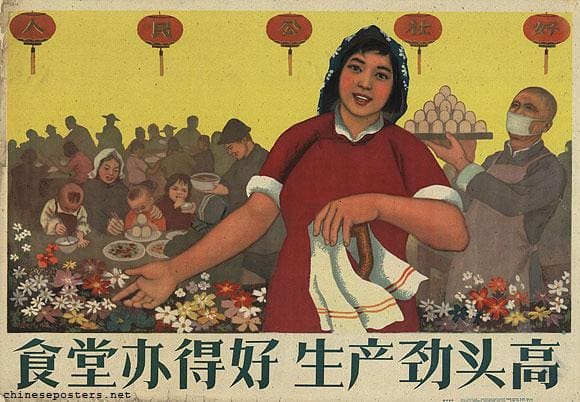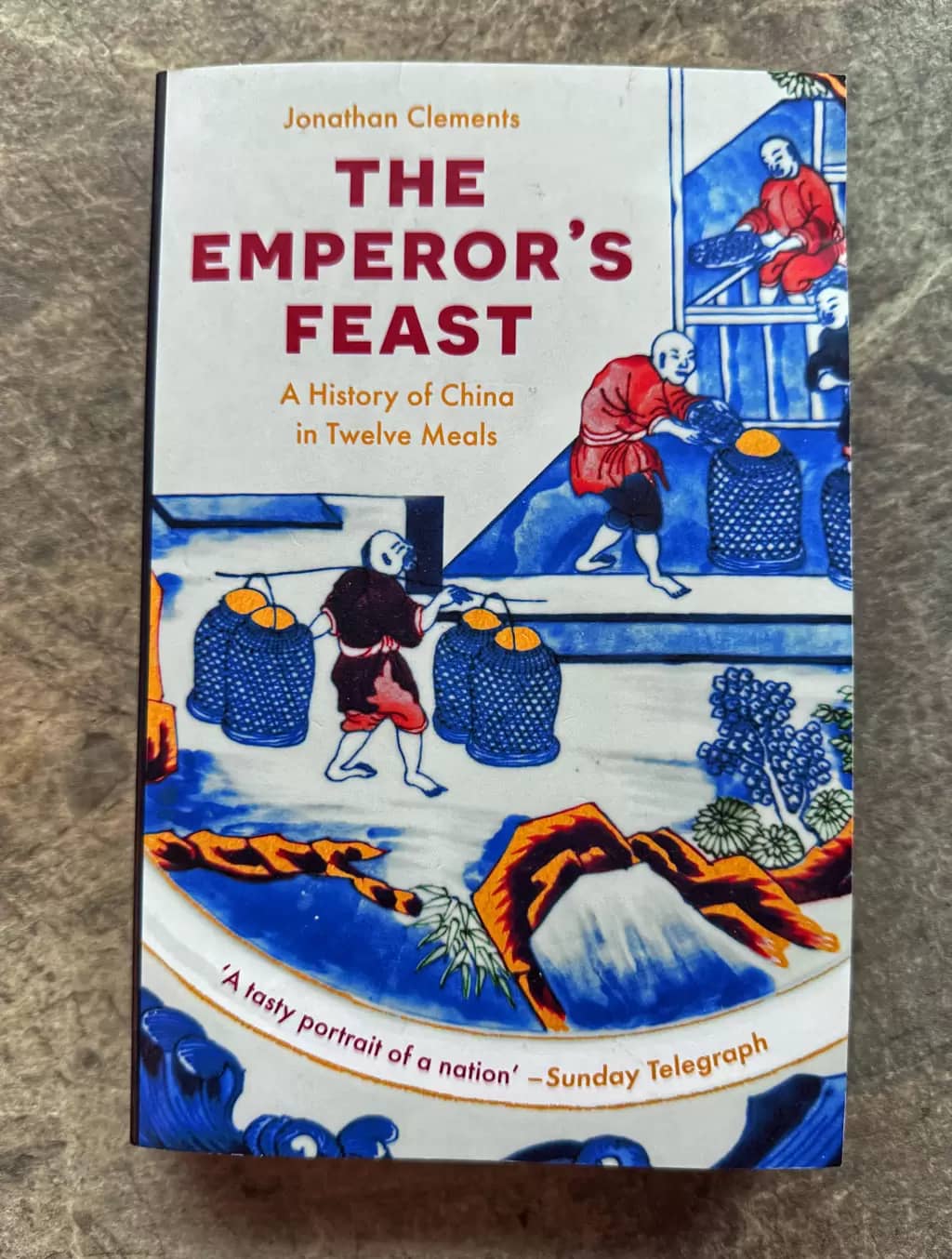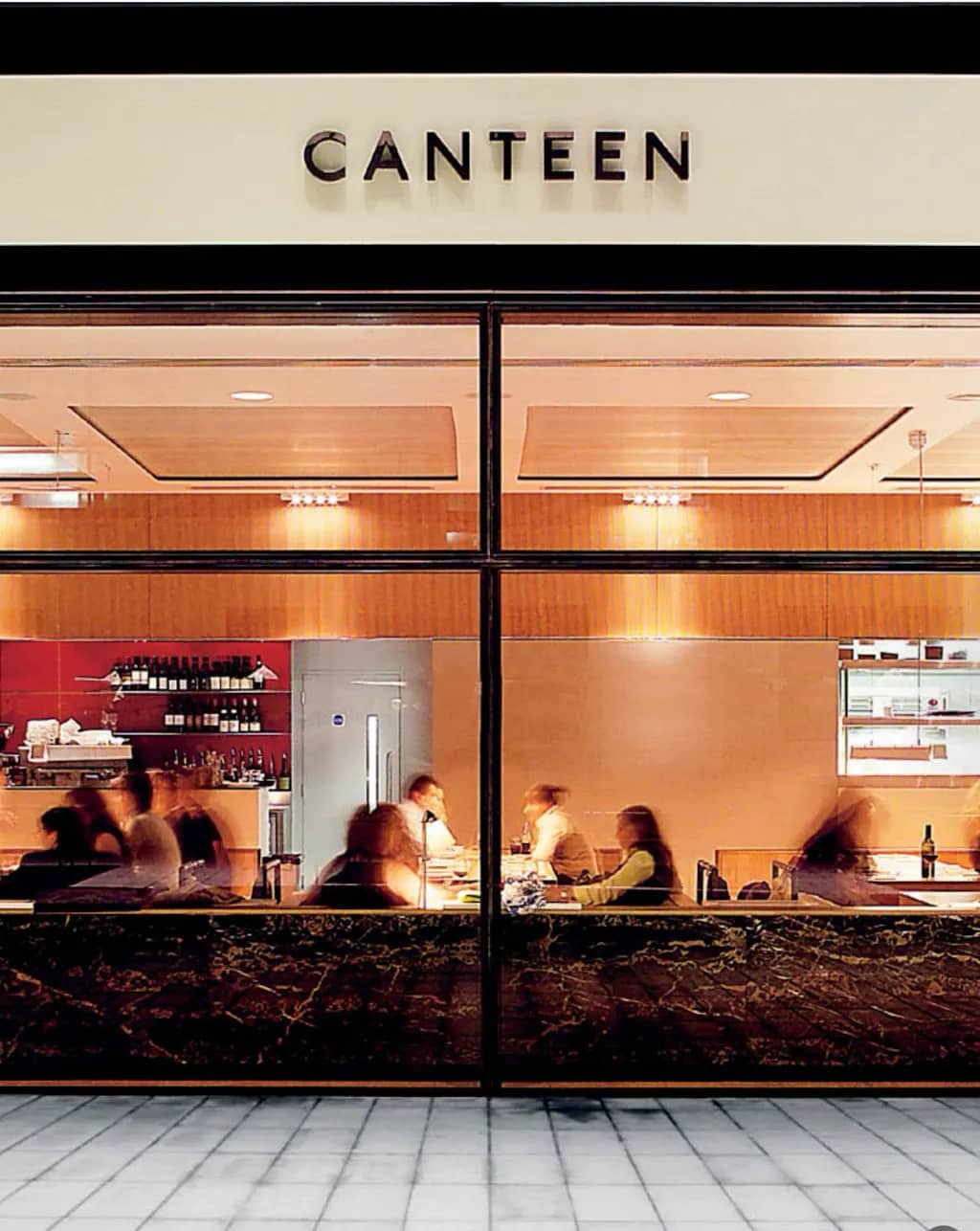Maybe a slight hint of that one in there, you think? The actual translation on this one. is “when the dining hall is well-run, the production spirit will increase~”…

I’m working on a long “piece” not sure of the format etc. so this post is simply a placeholder for some (occasionally random) thoughts and ideas which I can come back to, but at least gets it off the dreaded ever increasing Drafts pile…
I was pointed at its source, this posters site — a fantastic resource — whilst reading the very excellent (and well worth your pennies) “The Emperor’s Feast” book…

…an historical trip through Chinese cooking, that sits very nicely alongside Fuchsia Dunlop’s “Invitation to a Banquet” which I’ve already raved about.
My take on why canteens didn’t exist as discreet entities until a couple of hundred years ago?
bit late to this party (I have a job!) but it’s because working class people were thrown off the land, and into industry and workhouses hundreds of years ago – after this we were hived off into estates with tiny patches of grass – no food culture can grow here. why is every example of good british food just indian or arab food. your culture is older than america’s by like a millenium why do you have to go into your colonies to find something appetizing
Mention the “soupers” of the Irish Famine; they got soup so they didn’t starve; but only if they converted to Protestantism.
Comedor populares, South America, Peru, killed by Shining Path AND the government
Industrialisation and cities.
Not charity, but solidarity. Take over the “dark kitchens” and socialise them.
Why were canteens necessary and why is English food so crap?
The community kitchen initiative was first brought in by wartime Food Minister Lord Woolton to boost the nation’s health and strength during WW2. More than 2,000 dining halls — run by local authorities and volunteers in schools, town halls and hospitals — served up around 180million meals a week to the public for as little as 30p.

“Spencer himself was something of a maverick, a technocratic Yorkshireman who stayed in post until January 1919, when he resigned citing the demands of his many other business interests. Significantly, these interests included his chairmanship of the Halifax Tramways Committee. His nervousness about the radical potential of working-class assemblies merged with his verve for technological progress (and business acumen) into an idea for a novel form of National Kitchen offering meals on wheels. He called this take-away form of communal feeding the ‘travelling kitchen’. This was a tramcar fitted with ovens and powered by overhead electricity wires that ‘not only distributes the cheapest of cheap dinners but cooks them on the way’ ”
Can be very po-faced when rhapsodising about canteens. “Horny handed sons of the soil” etc etc
Friend of the working man! the heart-warm tear,
© IWM
Wiped by the horny hand of honest toil,
Is shed in grateful showers upon thy bier,
By million workmen upon British soil! “On The Death of John Cassell” by Janet Hamilton
When were the first canteens? Pyramid Egypt?
The pyramid builders in Giza were probably given catered food every single day to keep them going. In fact, Live Science says that the remains of a catering operation were found near the pyramids, in an area called Heit el-Ghurab (where the workers lived, nearby the Sphinx), indicating that food was probably supplied to the workers. They probably ate a ton of meat. We’re talking 4,000 pounds of the stuff — EVERY SINGLE DAY. Apparently, it took 21,900 cattle and 54,750 sheep and goats to feed the Giza workers.
And all the workers, regardless of their class, got to eat it; specifically slaughtered to feed the thousands of workers who erected the iconic pyramids.
It’s estimated that the builders probably needed about 45 to 50 grams of protein every day and probably ate a mix of sheep, goat, and pig to get this intake. They’d have lots of grains, too, since that was a staple in the Egyptian diet. According to Live Science, they’d also consume lots of fish, beans, lentils, and non-meats. But what about cheese or dairy? These foods were probably not on the table since it was harder to come by and harder to transport.
Field canteens
Lyon’s
Google “keep them in the office at all costs” ‘free’ or subsidised canteens etc nowadays
I only include Marco Pierre White’s “Canteen”, once located in the Communist working-class enclave, known so well to Michael Caine, of Chelsea Harbour http://www.dine-online.co.uk/canteen3.htm
Winner’s review http://www.winnersdinners.com/reviews/1994/19940213.php
A small restaurant chain called “Canteen”. That their recipe book was blurbed by Giles “I’m-A-Complete-Cunt-Human” Coren aside (you need more detail on his awfulness as a human being, start here but there’s plenty of other details of other incidents out there about what a complete shit person he is)

Alexei Sayle talks about canteens in his “Stalin Ate My Homework” memoir
“By the time we reached Paris it had become clear that Prendergast was the comedy drunk in our western. He first went missing near the Game du Nord, and by the time he was found we had missed our lunch. With a fractious and hungry group on his hands Joe immediately did what he always did in an emergency, which was to go looking for Communists. It only took a few minutes of searching before we were sitting down to eat a late lunch in the railway workers’ canteen of the very station where we had arrived from the coast. All of us were astonished at the quality of the cooking and the simple stylishness of the surroundings. In British factories and workplaces the canteens were often vile places serving disgusting food, but here there were long wooden tables set with paper tablecloths. On the tables were Duralex glasses, sturdy and elegant, carafes of water and a rough but drinkable vin de table. The food, simple cuisine de terroir — fresh bread, coq au yin, fragrant salad — was of a quality you couldn’t even approach in a top hotel in Liverpool.”
Canteen love; or I love a good canteen
Fascinating piece on London Transport canteens with some amazing photos
For a German Chef, Hospital Food Is the Ultimate Challenge
And Angry Workers
and https://www.ktchnrebel.com/company-restaurants